Travel to The Mekong Delta in the morning, where to go and what to do to have the most enjoyable experiences? Here are eight suggestions from Wanderlust Tips.
[rpi]CAI RANG FLOATING MARKET – GOING TO THE MARKET ON THE RIVER
Cai Rang Floating Market is located in Cai Rang District, Can Tho, about 30 minutes by boat from Ninh Kieu Quay. There are many floating markets in the Mekong delta, and Cai Rang is the largest and most famous one. The market specialises in the sale of local fruits and agricultural products. In the morning, hundreds of boats are in close proximity to one another. The seller hangs the products on poles from the nose of the boat, so buyers would know what kinds of products they sell.
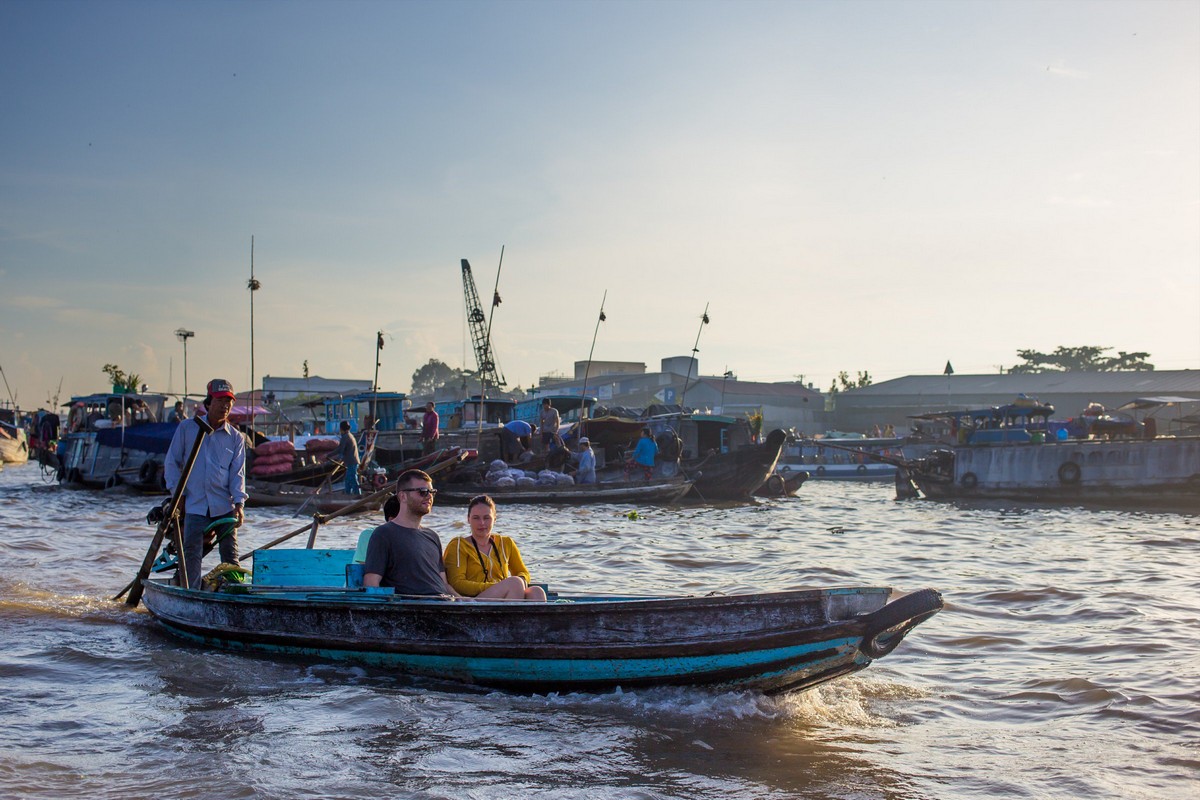
Top tips:
Cai Rang Floating Market is often open fairly early in the morning until about 8 or 9am. Due to the needs of the buyers, besides fruit and agricultural products, many other things are offered: noodle, hu tieu (noodle with seasoned and sautéed beef), coffee, and floating pubs. Guests rent boats to explore floating market with prices from VND350,000/boat.
Must see: Take a boat trip to visit the floating market, fruit garden or hu tieu factory.
Cuisine: Enjoy local specialties on the boat in the market.
BANG LANG STORK GARDEN – THE LARGEST BIRD SANCTUARY IN NINE DRAGON RIVER DELTA
About 60 kilometres away from Can Tho’s city centre, Bang Lang Stork Gardens is located in Thoi Thuan Ward, Thot Not District, Can Tho City. This place attracts hundreds of thousands of storks (white storks, gray storks, black storks, little cormorants) from many regions migrating to find places to nest. They land on the mid-sized bamboo branches, swinging with the wind, calling for each other. Visitors have the opportunity to explore the interesting living habits of crowded storks amidst the peaceful countryside of the Mekong Delta.
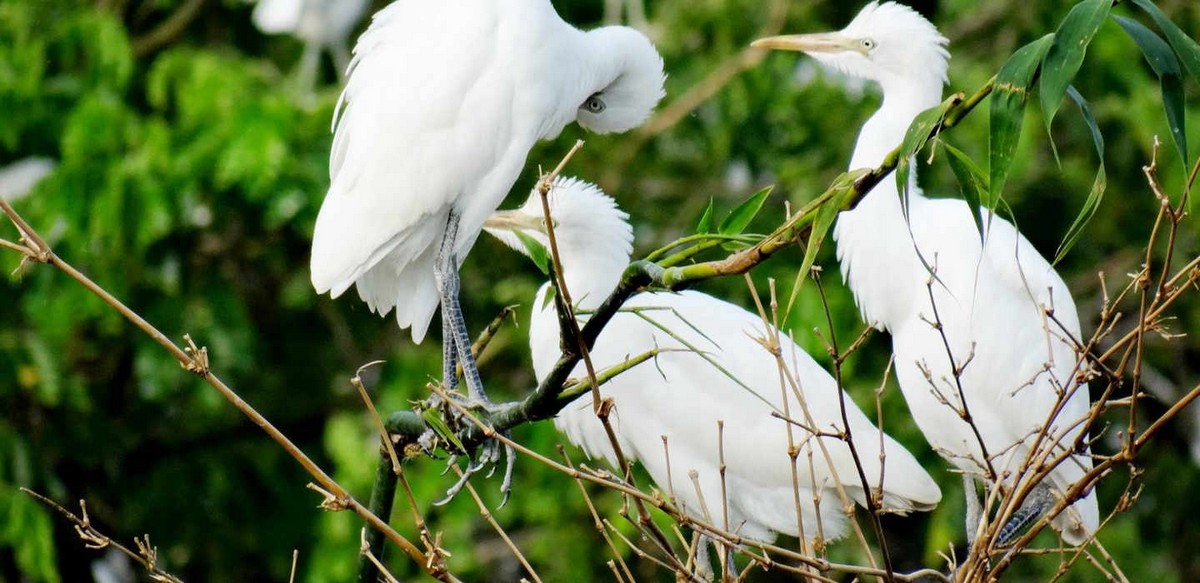
Top tips:
To see the vibrant living rhythm of the garden, visitors should go from August to January according to the lunar calendar. Especially, if you want to admire the cattle migrate, you should come here from February to April according to the lunar calendar. From 5am to 6am, the flocks will fly away to find food; at about 5pm, they will fly back. These are ideal times of the day to visit the stork garden, enjoy the moment of beautiful stork wings in the dawn or sunset. Ticket price: VND10,000 per person. Opening hours: 5am-7pm daily.
Cuisine: Along the National Road 91, in Thot Not District, there are many restaurants such as Phuong Nam (Thuan An Ward), Loc Phat (Long Thanh Ward).
TRA SU CAJEPUT FOREST – BEAUTIFUL PAINTINGS OF GREEN NATURE
Tra Su Cajeput Forest is located in Van Giao Commune, Tinh Bien District, An Giang Province, about 20 kilometres from Chau Doc City and 130 kilometres from Can Tho City. This is a typical riparian forest in the Mekong delta area of the Hau River, home to many waterbirds, wild animals and aquatic species in Vietnam’s special-use forest. Moreover, visiting cajeput forest, you have chance to learn about the unique cultural value of the Khmer and Kinh communities living along the forest with many traditional handicrafts such as brocade weaving, jaggery making, cajeput essential oil distillation and beekeeping.
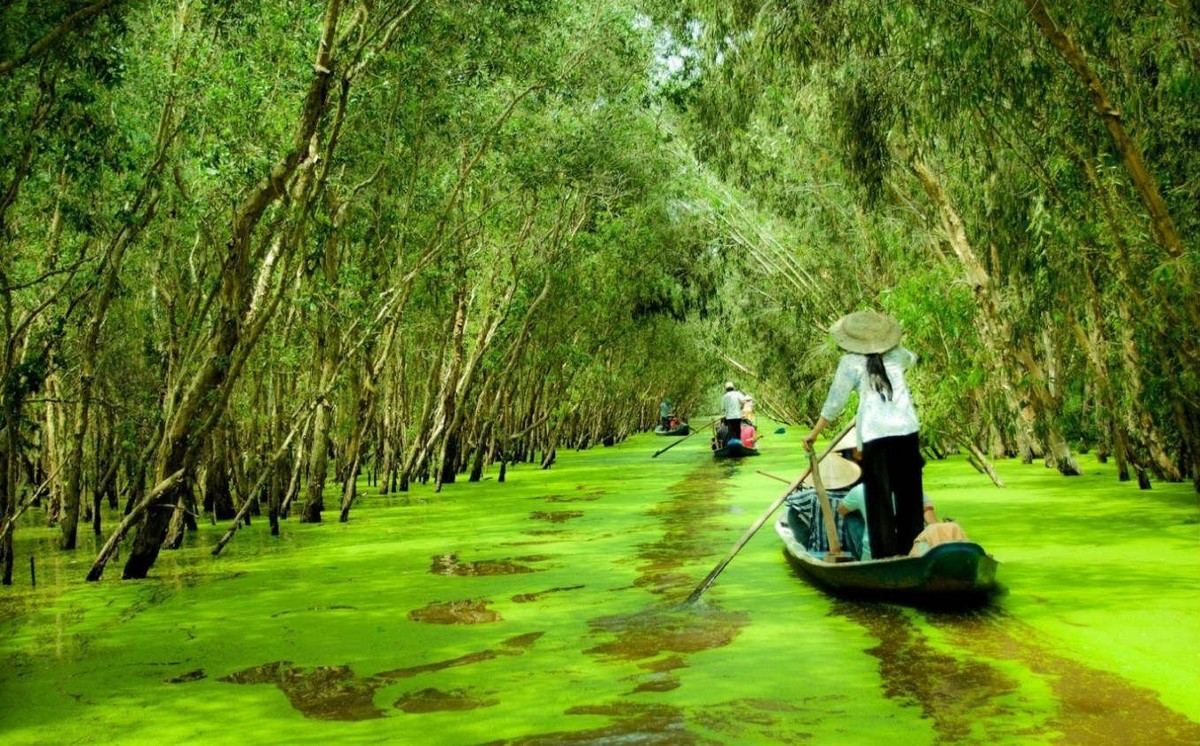
Top tips:
To explore cajeput forest, visitors can rent tandems to ride around the forest or travel on small boats or canoes threading through the canals. The green of cajeput covers the space, and dozens of singing birds will make visitors feel like they are getting lost in the wonderland.
Cuisine:
Enjoy specialties: roasted siamese mud carp, snakehead fish steamed with gourd, rice field crab served with tamarind fish souce, tamarind sauce, sesban flowers salad … at the restaurants in the residential area along cajeput forest.
TRAM CHIM NATIONAL PARK – EXPLORE THE DIVERSE ECOSYSTEMS OF WETLAND
Tram Chim National Park is located in 7 communes of Tam Nong District, Dong Thap Province. The national park has an area of 7,588 hectares, home to many species of flora and fauna, of which there are nearly 200 species of waterfowl, accounting for about a quarter of all bird species in Vietnam. Visiting Tram Chim National Park, visitors will be guided through waterways on the lagoons, passing through the Melaleuca forests and immense grasslands, experiencing firsthand the beauty and interesting activities of the birds.
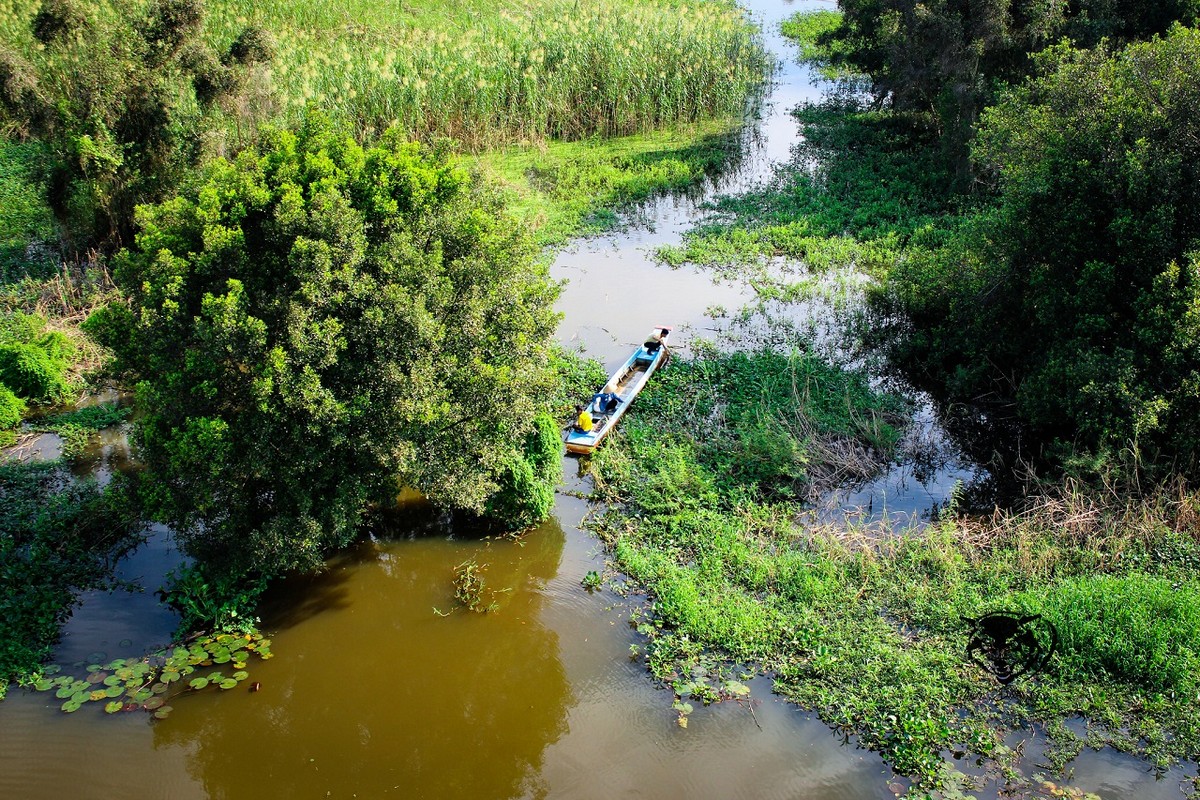
Top tips: From Can Tho’s inner city, go along National Highway 1A then turn left, and then follow the National Highway 30 to Tram Chim National Park. The distance from Can Tho to Tram Chim is about 120 kilometres.
Must see: If you have a lot of time, you can visit the attractions of Cao Lanh District, Dong Thap Province: Xeo Quyt Relic (Hamlet 4, My Hiep) and Gao Giong Ecotourism Park (Hamlet 6, Gao Giong Commune) are located on the road from Can Tho to Tram Chim National Park.
Cuisine: Enjoy country-style dishes with authentic flavours at the food court in the national park.
TAN LAP FLOATING VILLAGE ECO – TOURISM SITE – IMMERSE YOURSELF INTO THE NATURE
Located in the centre of Dong Thap Muoi, Tan Lap Floating Village (Tan Lap Commune, Moc Hoa District, Long An Province) is a wetland with a typical cajeput forest, lotus, water lilies, water hyacinth, and wild rice lakes. It is home to many kinds of animals (birds, storks, fishes, etc.). The forest canal runs through Tan Lap Floating Village, in front of which, there is the gentle river called Vam Co Tay. Here, visitors can stroll on the path through the forest, or sail through the forest canal, enjoy a panoramic view of the vast forest from the observation tower, explore the cultural identity of local residents with traditional handicraft, the art of Don Ca Tai Tu (music of talented amateurs), and special festivals.
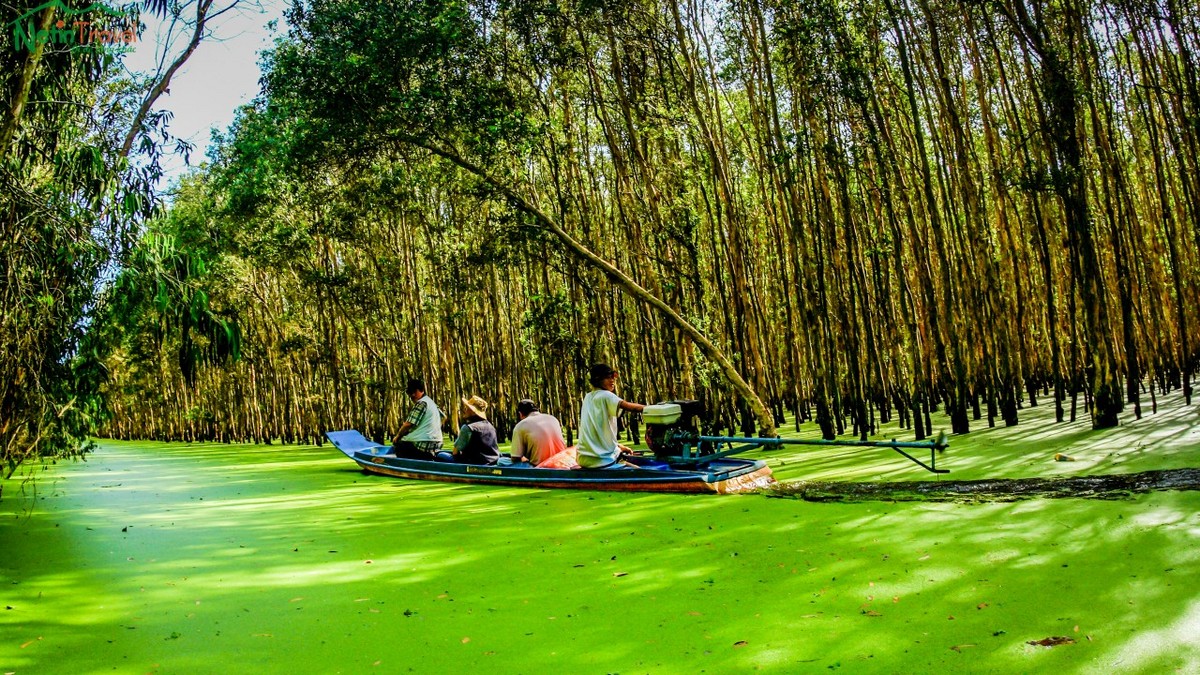
Top tips:
From Can Tho’s inner city, tourists can follow National Highway 1A, cross Can Tho Bridge and go straight. Then you will pass through Vinh Long City (Vinh Long Province) and Cai Lay Town (Tien Giang Province) to Long An Province. Continue to drive along National Highway 62 to Tan Lap Floating Village. The distance is about 120 kilometres. Ticket price: VND55,000 per person.
Cuisine: Bring food to the eco-tourism site or enjoy specialty food in the Tan Lap dining area.
VINH TRANG PAGODA – A COMBINATION OF ASIAN AND EUROPEAN ARCHITECTURE
Vinh Trang Pagoda is located on Nguyen Trung Truc Street, My Phong Commune, My Tho City, Tien Giang Province. This is the largest Buddhist temple in Tien Giang Province, and it was also ranked a national historical-cultural relic in 1984. Vinh Trang Pagoda was built in the shape of “Nation”, a Chinese character that resembles a pagoda. The temple also includes elements of the Renaissance, a Romanesque style, French decorative flowers, and Japanese enameled tile. Chinese characters are written in the ancient style, but the national language is written in Gothic characters. On the exterior, the architecture of the pagoda is an unusual yet harmonious combination of Asian and European aesthetics. However, the internal architecture of the temple still features the traditional Vietnamese sculptural style.
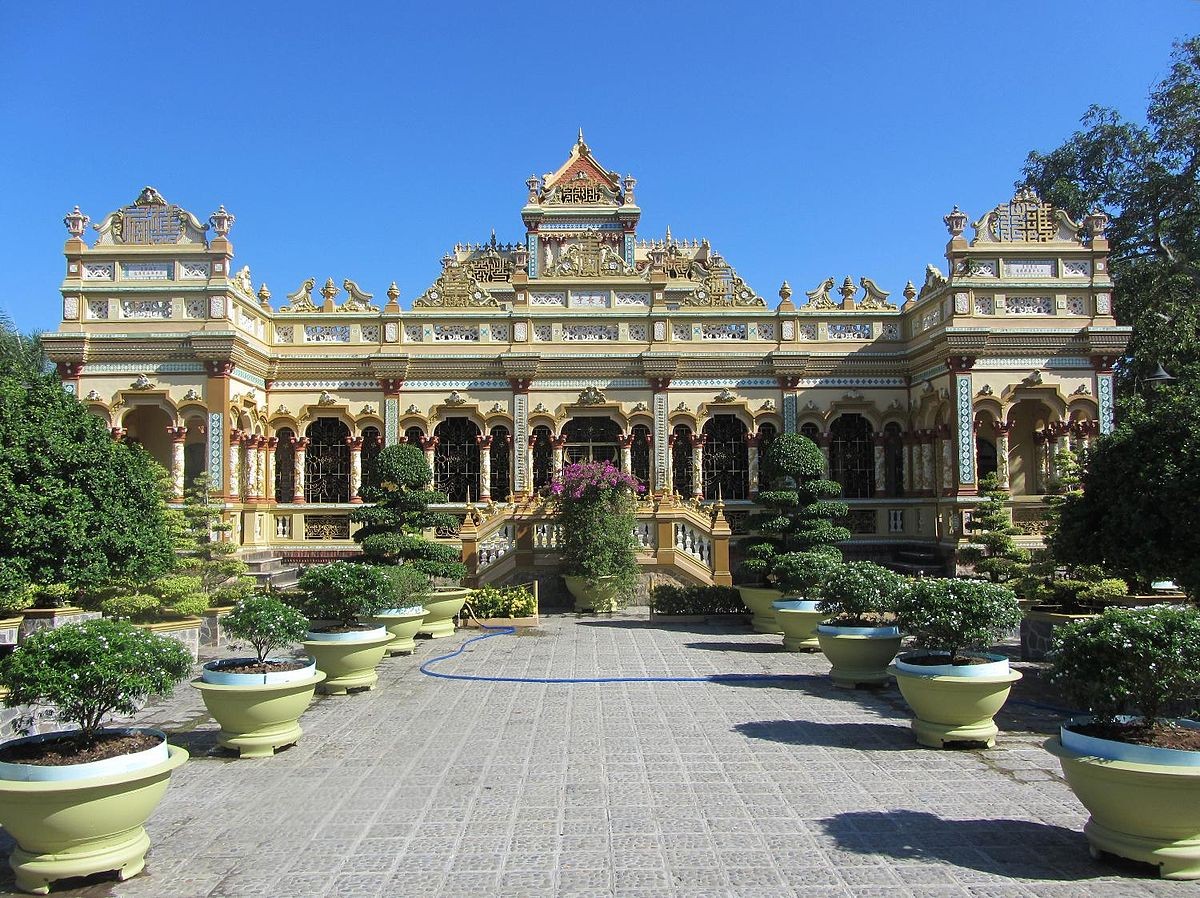
Top tips: From Can Tho’s inner city, tourists can travel along National Highway 1A through Vinh Long Province, Tien Giang Province to My Tho City. The distance is over 100 kilometres.
Must see: Along the way from Can Tho City to Vinh Trang Pagoda, tourists can visit Dong Tam Snake farm in Binh Duc Commune, My Tho City.
Cuisine: Right on Nguyen Trung Truc Street, there are many restaurants such as: Bo De, Sy Gia, and Ta Hien Restaurant.
THE FAMOUS PAGODAS IN SOC TRANG – PRESERVING TRADITIONAL CULTURAL AND HISTORICAL VALUES
Soc Trang Province is home to more than 200 pagodas of three ethnic groups: Kinh, Khmer, and Chinese (the Khmer ethnic group accounts for nearly 29%). Therefore, it is not strange to see, in almost every district and commune, the presence of different pagodas, creating a beautiful and holy architectural complex honouring traditional cultural and historical values of Soc Trang in particular and the Mekong Delta in general.
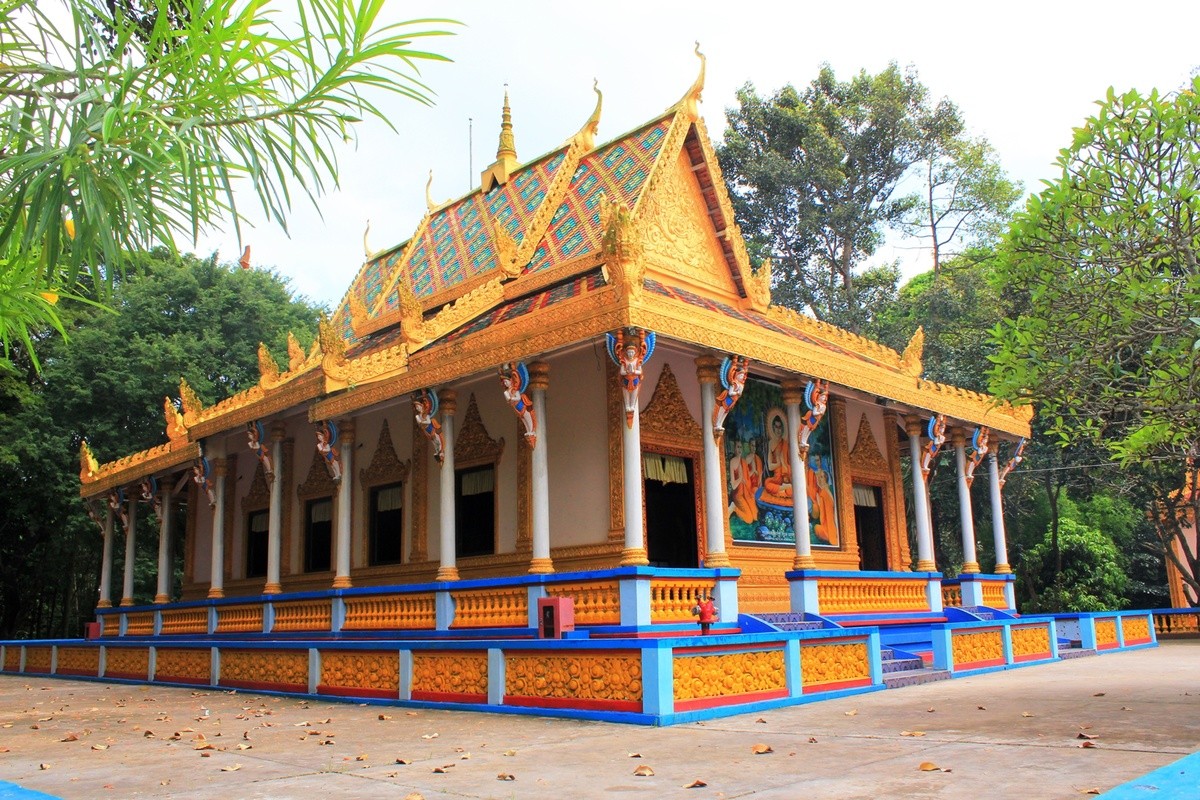
Top tips:
From Can Tho’s inner city, follow the National Highway 1A to Hau Giang Province, passing through Nga Bay Town (Hau Giang Province) to Soc Trang Province. The distance is about 60 kilometres. Soc Trang Province has many pagodas, but top the four must-see pagodas are: Doi Pagoda, Dat Set Pagoda, Kh’leng Pagoda (in Soc Trang City) and Chen Kieu Pagoda (My Xuyen District, 10 kilometres from Soc Trang city centre).
Cuisine: Enjoy famous Soc Trang cuisine: fish broth with rice vermicelli, da salad vermicelli, coóng cakes, blotched snakehead porridge, Vietnamese pancakes, grilled beef, grilled pork skewer, and hu tieu noodle.
PRINCE OF BAC LIEU’S HOUSE – THE MOST PROMINENT HOUSE IN SOUTHERN VIETNAM IN THE EARLY 20TH CENTURY
Prince of Bac Lieu’s House was built in 1919. The two-storey building is distinguished by its luxurious white colour and magnificent French architecture. This place is associated with the Prince of Bac Lieu, Tran Trinh Huy, the most famous male patrician of Southern Vietnam in the early 20th century.
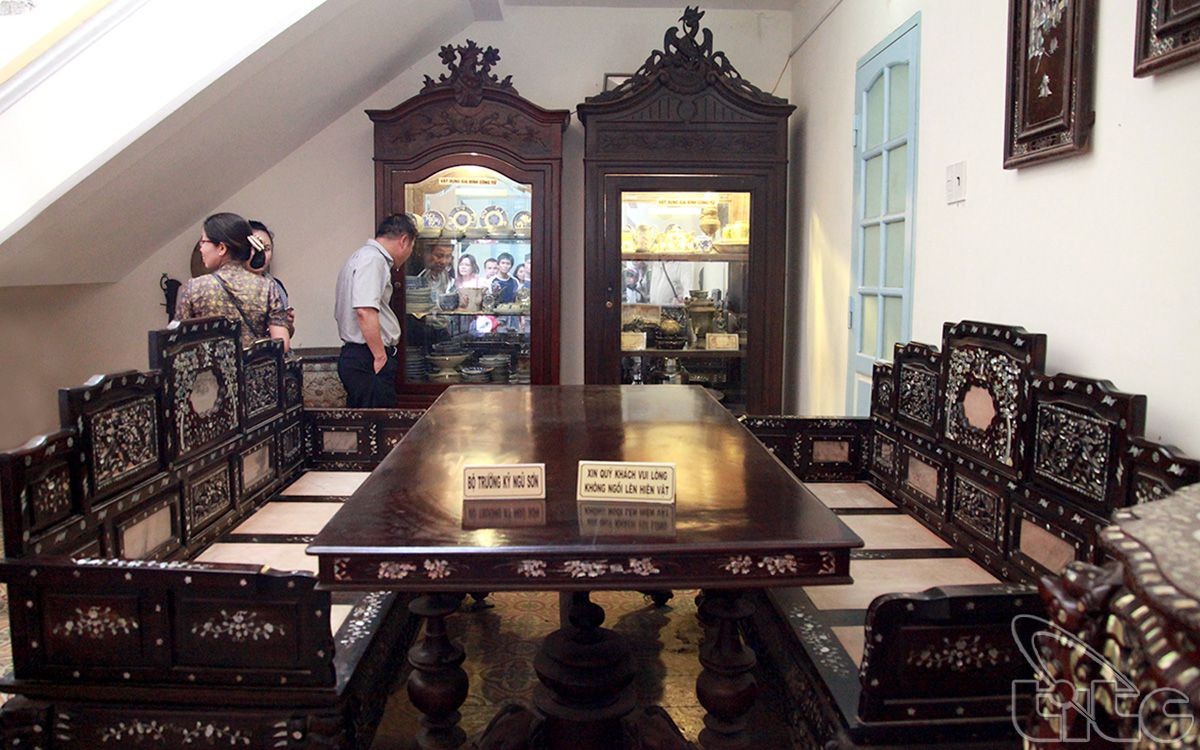
Top tips:
The house is located at 13 Dien Bien Phu, Ward 3, Bac Lieu City, Bac Lieu Province, near Bac Lieu river bank. From Can Tho’s inner city, follow National Highway 1A through Can Tho Bridge, then go straight and pass Nga Bay Town (Hau Giang Province) and Soc Trang City (Soc Trang Province). Exiting Soc Trang Province, you will arrive in Bac Lieu Province. The distance is over 100 kilometres.
Must see: Visitors can visit the famous sites of Bac Lieu City, such as Xiem Can Pagoda which has typical Khmer architecture, the Bac Lieu wind farm, Bac Lieu Beach, and the Bac Lieu Salt Field.
Cuisine:
Enjoy Bac Lieu’s specialties such as fish sauce hot pot, Ngan Dua thick noodles and creamy coconut milk, Pungent rice vermicelli with beef, Vietnamese pancake, xa bau (salted and sweetened radish), bulrush, seafood, etc.
Wanderlust Tips

